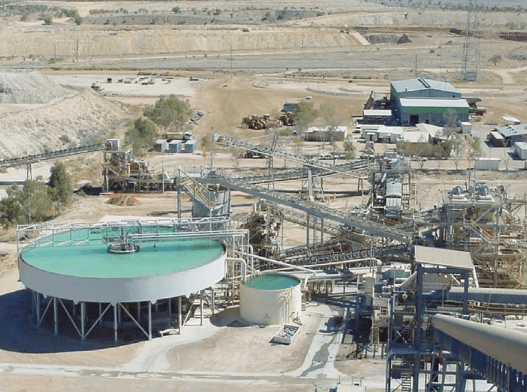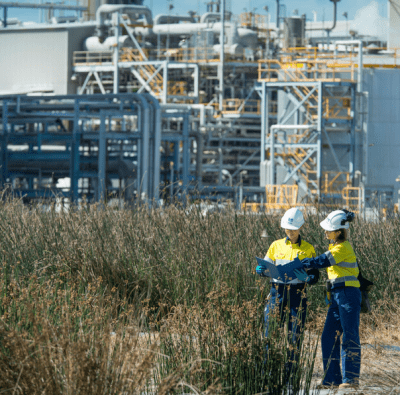
Phosphate Hill, located between Mt Isa and Boulia, has received $28M from the Federal Government’s July 2024 round of Powering the Regions funding. Photo: Incitec Pivot Limited
INCITEC Pivot Fertilisers and CSBP Limited have received grants from the Federal Government’s Powering the Regions Fund for projects aimed at cutting carbon emissions.
IPF has received $28 million which will go towards renewable energy for its Phosphate Hill production facility in north-west Queensland, while a $7.5M grant to CSBP will help to fund a low-emission waste gas incinerator at its fertiliser plant at Kwinina in Western Australia.

CSBP’s Kwinana manufacturing plant. Photo: CSBP
This grant is one of several recent windfalls for CSBP’s Kwinana operations.
Via its parent Wesfarmers Chemicals, Energy and Fertilisers, CSBP in April received $32.9M, also from the Federal Government’s Powering the Regions Fund, to go towards the installation of tertiary abatement catalysts in two of its older nitric acid ammonium nitrate (NAAN) plants at Kwinana.
This is on top of $500,000 awarded to CSBP late last year via the WA Government’s Carbon Innovation Grants program to pilot the latest form of catalyst technology in WesCEF’s third NAAN plant.
Under the Renewable Energy Transformation at Phosphate Hill project, IPF aims to displace onsite gas-fired power generation by deploying a hybrid solar and battery storage system.
The increasing cost of domestic gas and recent interruptions in supply has plagued IPF’s Phosphate Hill in recent years.
In June 2023, IPF parent company Incitec Pivot Limited announced that gas supplier Power and Water Corporation had advised it of a shortfall.
IPL informed the market that the gas shortfalls were expected for the remainder of the supply contract with PWC, which was to end in mid-2028.
This development cut production at Phosphate Hill and overall earnings, as well as forcing IPL to procure replacement gas.
Six projects share in $91M
This latest round of Powering the Regions funding has allocated a total of $91M to six projects which are forecast to reduce climate pollution by more than 1 million tonnes each year, equivalent to taking more than 240,000 cars off the road.
In addition to the Phosphate Hill and CSBP projects, the other grant recipients in this round are:
- $37.2M to reduce ventilation methane emissions at Kestrel Coal in the Bowen Basin;
- $9.8M to deploy emissions capture technologies at the Dyno Nobel ammonium nitrate facility in the Bowen Basin;
- $5.4M for energy efficiency upgrades at the Boyne Aluminium Smelter in Gladstone; and
- $3M for electrification at the Viva Energy Refinery in Geelong.
Minister for Climate Change and Energy Chris Bowen said the grants would help key industries thrive throughout Australia’s net zero transformation.
“This $91M investment provides the right support at the right time to help Australia’s industries drive down emissions,” Mr Bowen said.
“These industries have traditionally been very energy intensive and hard to abate.
“These grants will help them make their fair contribution to our national targets.”
Minister for Industry and Science Ed Husic said Australian industry is critical to delivering a Future Made in Australia, supporting hundreds of thousands of jobs while Australia transitions to a low-carbon future.
“We know they’re working hard to cut emissions, power our economy and create a greener future; that’s why we’re ensuring they have the right support in place to make the most of new technologies and seize opportunities in a shifting global economy,” Mr Husic said.
“Through these investments we’re continuing to back Australian industry and help them transition to net-zero, because a country that makes things creates strong businesses and more high-paid jobs.”
Source: Federal Government

HAVE YOUR SAY